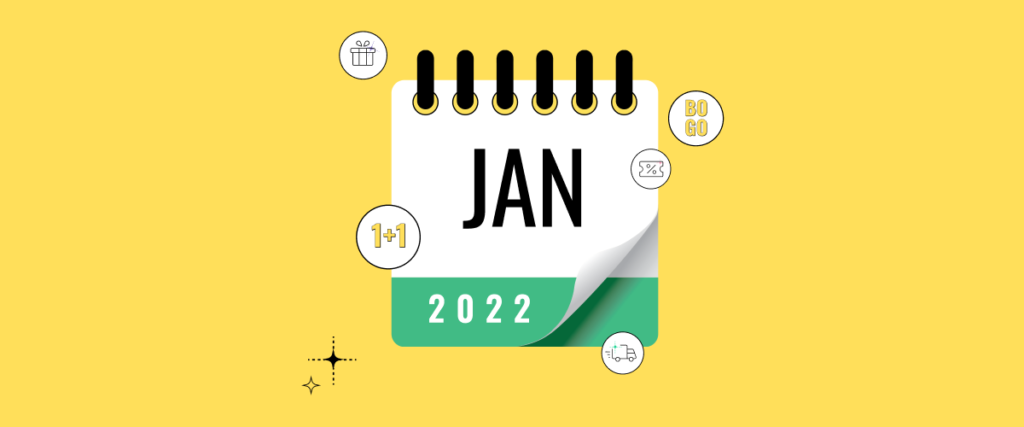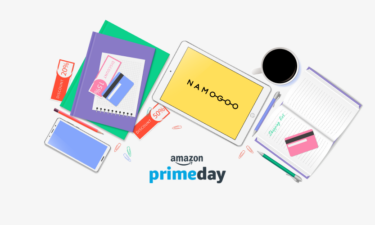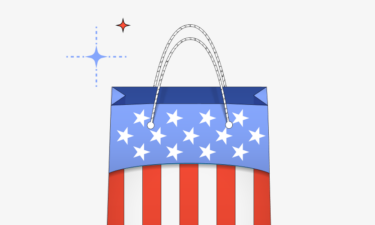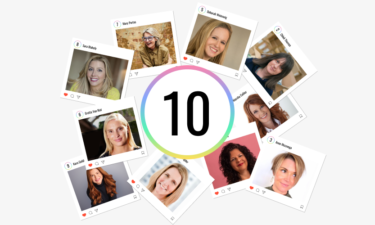Who doesn’t love to score a great deal? Holiday eCommerce promos are staple marketing tactics that attract shoppers, create urgency, and boost sales. They’re not just that, however. When done right, holiday promos are also magnets for organic engagement, repeat purchases, and loyal customers.
In this post, you’ll find a list of holidays that you can prepare for and incorporate into your 2022 promo strategy. We put together best practices plus a downloadable eCommerce holiday calendar so you can keep track of events—from the lesser-known to the major ones. This way, your marketing campaigns for seasonal promos and special discounts throughout the year will be in tip-top shape.
eCommerce and the Joy of Holidays and Promos
In eCommerce, every month has a reason to celebrate. From New Year to Kwanzaa, you have multiple opportunities to grow your business by engaging with shoppers through strategic sales and engaging promotions.
The last hurrah every year though is December, and you can expect 2021 spending to rise this season. According to Accenture[*], as many as 71% of shoppers intend to spend as much or more than they did in 2020. As the next two graphs show, eCommerce sales this year will account for 18.9% of total holiday retail sales, reaching USD 206.88 billion.
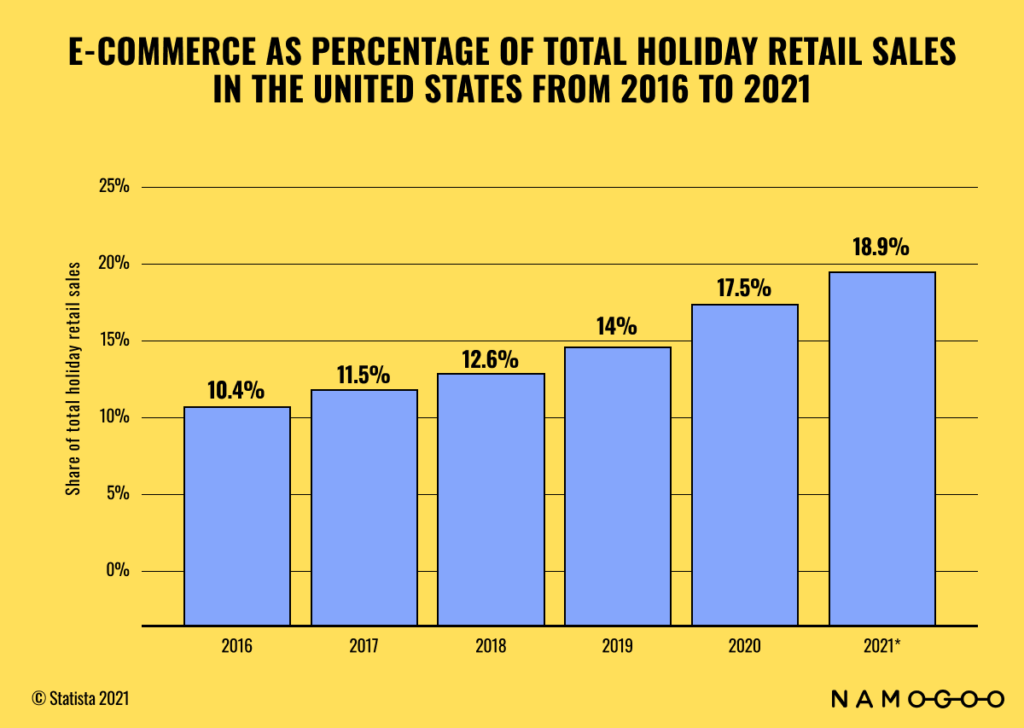
Graph and data source: eMarketer via Statista
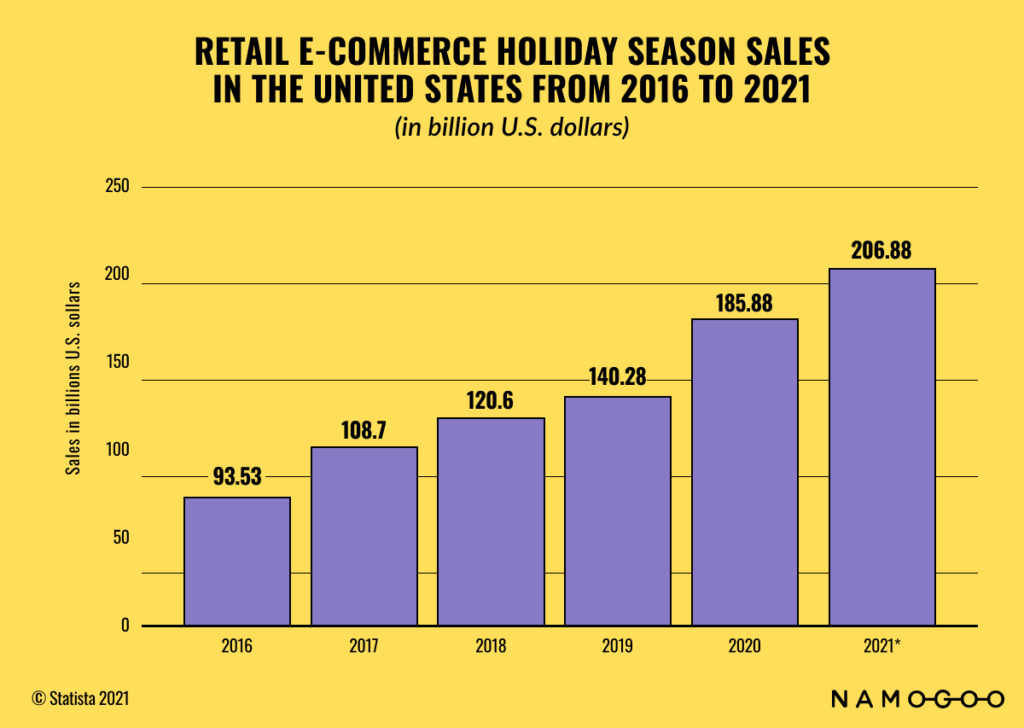
Graph and data source: Statista
Among the holidays throughout the year, Thanksgiving weekend remains to be one of the most anticipated, lucrative, and successful sales seasons, along with Singles’ Day. The graph below shows that Cyber Monday is expected to remain the shopping day with the highest eCommerce sales at $11.38 billion this year. Black Friday trails behind, raking in $9.53 billion.
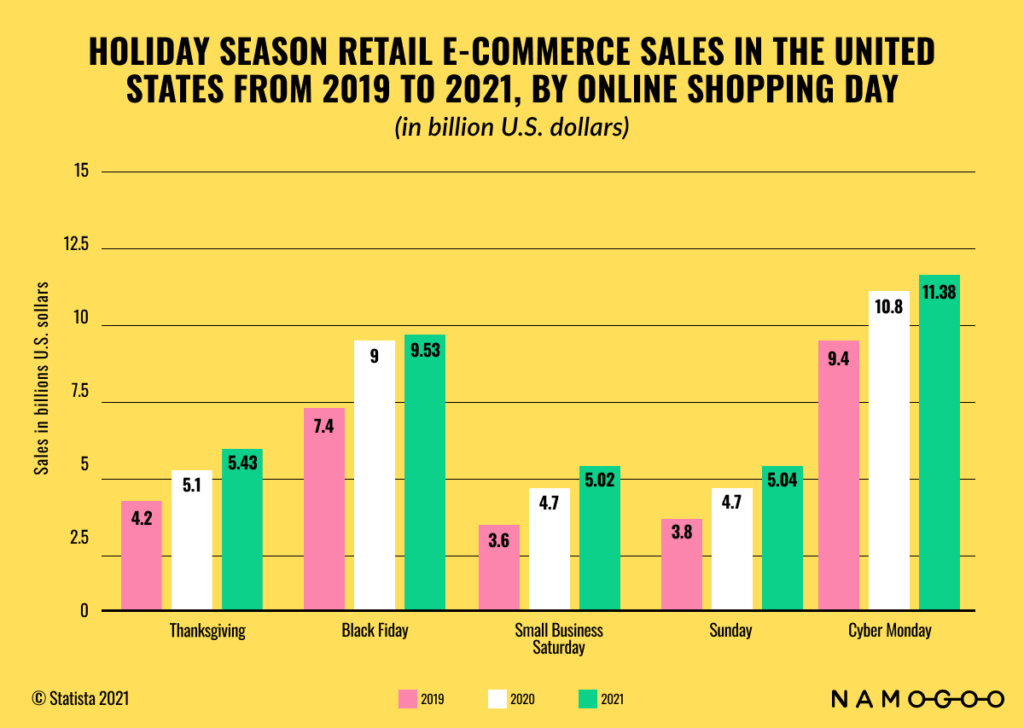
Graph and data source: Statista
The Role that Promos Play
Holiday shopping, in recent memory, has always been made thrilling by promos. You can even say that sales, coupons, discounts are instrumental in the success of holiday marketing campaigns.
A survey[*] found that two-thirds of consumers make unplanned purchases when they have access to a coupon or discount. Moreover, 74% of consumers say offers and discounts are the main drivers for deciding where and what to buy online. Coupons can also convince 75% of shoppers with abandoned carts to continue the shopping process.
During holiday sales when competition for your shoppers’ attention can be as high as their intent to buy, delivering the right promos at the right moment is even more crucial. McKinsey & Co.[*] found that offers, especially when they’re personalized, are important for 65% of shoppers who are buying their first purchase from a brand.
11 Holiday Promo Best Practices to Keep in Mind
Holiday shopping promos can make all the difference. In addition to increasing conversions, effective offers can support your other business objectives such as introducing your brand to new markets and increasing engagement with both old and new customers. To do them right, the following marketing strategies and tips should help your promo planning and lead you to success in 2022.
- Familiarize yourself with the upcoming holiday dates. Then, determine how much they matter to your target customers. Not every date will be relevant for your brand; make sure that the holidays you choose reflect your brand image and are specific to your product offerings.
- Look at the data from the previous years. How did you do in terms of sales and inventory? Which holiday performed best in terms of bringing in new customers? Previous data can help your brand set goals and determine which promo strategies worked and which didn’t.
- Prepare your inventory. You can pick out popular items based on your sales from the last year, the upcoming holiday, trends, and user interactions. Holiday promos can also be great for introducing new products. You should increase your SKUs if you expect an increase in customers.
- Get a head start on your competition. About 38% of shoppers[*] plan their shopping trips around specific promotional events. So, make sure to build anticipation on your product launches or discounts—or even start early! You can have sales previews, teasers on your channels, and emails about the upcoming holiday sale.
- Have a mobile-first strategy. Forty-one percent of shoppers [*] regularly shop with their smartphones or other mobile devices. So, make sure your promos are visible on any device your customers could be using.
- Mix and match promo types and execution. Customers can get tired of receiving similar offers from different brands. Try to mix things up a bit. One holiday it’s BOGO, the next it’s 50% off. You can also experiment with flash sales and giveaways to keep shoppers engaged throughout your promo period.
- Inspire your shoppers to claim your offers. You can include relevant content in your marketing campaigns that put your products into context. For example, attach your promos to holiday gift guides, influencer content, and community posts.
- Seek out your customers where it matters. Among touchpoints, shoppers showed a strong preference—as high as 60%[*]—for email in receiving updates and promotions from brands. Moreover, staying active on social media can expose shoppers to your offers that could inspire them to visit your site and buy.
- Personalize the experience of your shoppers. About 80% of customers[*] are more likely to purchase a product or service from a brand that provides personalized experiences. So, make sure that customer journeys, including your promos, are tailored to individual shoppers’ unique preferences.
- Guarantee a smooth checkout process. If you plan to use discount codes, double-check that they work at checkout. To ensure seamless experiences, you can also offer auto-sign-in or guest checkout for users who do not want to create an account.
- Prioritize data security and privacy. These are important in gaining shoppers’ trust. In a 2021 PwC[*] survey, 39% of shoppers say they are fine with the idea of brands using their personal data to share relevant discounts and recommendations.
The Only 2022 eCommerce Holiday Calendar You Need
There are plenty of holidays to take note of in 2022. To save you some time, we put together this eCommerce holiday calendar infographic. You can pick your holidays and plan accordingly. Do remember that not all of these will be relevant to your brand, and especially your customers. So, be strategic and make the most out of the holidays that end up on your promo calendar next year.

Which Holiday Promotions Would Your Customers Love?
From search to checkout, promotions affect every part of the shopping journey. Data[*] shows that shoppers are always looking for brands and retailers that offer the best value.
What does this mean for you? Two things. First, there are several holidays throughout the year that you can jump on to entice shoppers with offers that are hard to resist. Second, eCommerce is a competitive space. Shoppers have endless choices and many businesses vying for their attention. So, it’s important that your promos are relevant and contextualized to stand out.
Doubling down on personalizing the end-to-end customer experience can be your key differentiator next year. It’s high time to have a true understanding of your customers so you can customize the promos they receive based on their unique preferences and real-time intent. Adrian Mitchell, Chief Financial Officer at Macy’s[*], says that there could be “a more permanent shift away from deep, broad-based promotions to much more personalized promotions.”
To put it simply, every holiday is a chance to push promos that encourage shoppers to purchase. Instead of general, hit-and-miss deals, 2022 could be the year that will see more successful promos—because they’re tailor-made for each customer.



